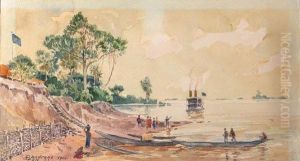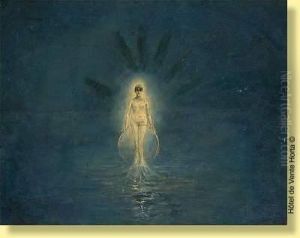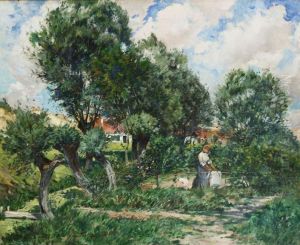Leon Dardenne Paintings
Leon Dardenne was a Belgian artist born in 1865, known for his significant contributions to the world of natural history illustration and ethnographic documentation. His work primarily revolved around the detailed and accurate depiction of flora, fauna, and indigenous cultures, which he encountered during various expeditions. Dardenne's illustrations are celebrated for their meticulous attention to detail, vibrant colors, and the ability to convey the beauty and diversity of the natural world.
Dardenne's journey as an artist took a pivotal turn when he joined the Belgian Antarctic Expedition (1897-1899) as an official artist, led by Adrien de Gerlache. This expedition aboard the RV Belgica was of monumental importance as it was the first to winter in the Antarctic. Throughout this challenging expedition, Dardenne meticulously documented the harsh yet mesmerizing Antarctic landscape, wildlife, and the crew's daily life, providing invaluable insights into the uncharted territory.
After the Antarctic expedition, Dardenne continued to travel, exploring various parts of the world, including Africa, where he focused on ethnographic studies. His work from these periods not only served as a scientific documentation but also as a bridge between different cultures, showcasing the lifestyles, customs, and attire of the indigenous peoples he encountered. This aspect of his work played a crucial role in the anthropological studies of the time, offering a visual account that complemented textual descriptions.
Leon Dardenne's contributions to art and science were cut short by his untimely death in 1912. Despite his relatively short life, his legacy endures through his exquisite illustrations that continue to be a source of inspiration and a valuable resource for scientists, historians, and art enthusiasts alike. His works are preserved in various institutions around the world, testament to the enduring significance of his artistic and scientific endeavors.


![[naiade.] Huile Sur Panneau Signee En Bas A Gauche](https://www.niceartgallery.com/imgs/511743/s/leon-dardenne-naiade-huile-sur-panneau-signee-en-bas-a-gauche-58a17183.jpg)




